What's New
Displaying results 4841 - 4850 of 4911
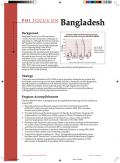
Resource | Fact Sheets,
Bangladesh is still a low HIV prevalence country, but faces tremendous challenges in remaining so. Although the first two national HIV Sentinel Surveillance rounds indicated low HIV prevalence among high risk groups such as Injecting Drug Users (IDUs), Male and Female Sex Workers and Transgenders, the simultaneously undertaken Behavioral Sentinel Surveillance (BSS) among the same groups showed very high rates of risk behavior, low condom use, low levels of risk perception and alarming levels of self-reported sexually transmitted infections (STI). FHI’s behavioral research among other high-risk groups strongly supports the BSS data and indicates that Bangladesh may not escape an HIV/AIDS epidemic.
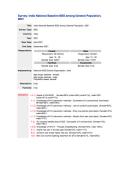
Resource | Data Sheets,
National Baseline BSS among the general population conducted in India in 2001.
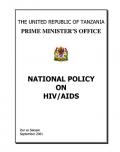
Resource | Publications,
HIV/AIDS is a major development crisis that affects all sectors. During the last two decades the HIV/AIDS epidemic has spread relentlessly affecting people in all walks of life and decimating the most productive segments of the population particularly women and men between the ages of 20 and 49 years. The increasing number of AIDS related absenteeism from workplaces and deaths reflects the early manifestation of the epidemic leaving behind suffering and grief.
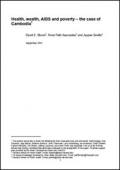
Resource | Publications,
This paper explores the nature of the HIV/AIDS epidemic in Cambodia, its impact on the country’s development and its effect on the 40 percent of Cambodians who live below the poverty line. It views AIDS within a wider health context, and explores the socio-economic factors that underlie both the epidemic’s development and the shape of the country’s response. Finally, it examines Cambodia’s options going forward, arguing that future responses will be needed along three tracks – those specific to AIDS; those specific to health; and those with a broad development focus.
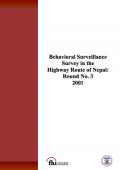
Resource | Publications,
The Behavioral Surveillance survey (BSS) for HIV prevention is based on serologic sentinel surveillance survey methods used in many countries to detect the emergence of HIV and monitor epidemic trends. Behavioral surveillance surveys are systems for quantitatively assessing sexual behavior change, consisting of structured questionnaires, administered periodically to samples of target groups specific geographic areas.
This survey is the third round of the BSS conducted in the highway route of the FHI project area.

Resource | Publications,
Behavioral surveillance surveys (BSS) form an important component of integrated surveillance systems for monitoring the HIV epidemic and are included in the second generation surveillance systems recommended by UNAIDS and WHO.
This report highlights findings from female sex workers and adult males (specifically sailors and seaport workers and truckers and their assistants) from the first through the fifth waves of the BSS, conducted yearly in 1996, 1997, 1998, 1999, and 2000.
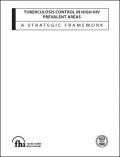
Resource | Publications,
Tuberculosis (TB) continues to be one of the most important global public health threats. The World Health Organization (WHO) estimates that the incidence of TB increased by 5 percent between 1997 and 1999, from 8 million to 8.4 million new cases. African countries severely affected by the HIV epidemic experienced a 20 percent increase in the incidence of TB; this rise is largely responsible for the TB increase globally.
The relationship between TB and HIV has been recognized since the early days of the HIV epidemic. Today HIV is known to be an important risk factor, contributing to the development of active TB from latent TB infection. A person co-infected with TB (positive PPD skin test) and HIV faces a five percent to 16 percent annual risk of developing active TB disease. HIV also makes individuals with a recent TB infection more likely to progress rapidly to active TB disease. WHO estimates that more than 10 million people worldwide live co-infected with TB and HIV, more than two-thirds of whom are in sub-Saharan Africa.
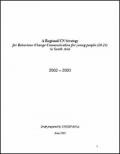
Resource | Publications,
As in other regions of the world, youth in South Asia will be disproportionately affected by HIV/AIDS. This has major implications for a region in which approximately 54 % of its population is below the age of 25 – the age of vulnerability for risk taking behaviour. Infection patterns already show the disturbing trend of increased infections in young people below the age of 25. Of the estimated four million people living with HIV/AIDS in the region more than one third are young people below the age of 25. This trend in infections means that large numbers of young people could become affected with devastating human and economic consequences.
The Regional Strategy has an objective of reducing HIV and other sexually transmitted infections among young people aged 10-24, and to increase access to care and support services for those affected by the epidemic by 2003 in Bangladesh, India, Nepal, Pakistan and Sri Lanka.

Resource | Publications,
"Beyond 2000 – Responding to HIV/AIDS in the New Millennium" unfolds the story of AIDS in WHO’s South-East Asia Region. The document focuses on how the epidemic has grown from a handful of HIV infections reported only from Thailand, in 1984, to over five million by early 2001. An extensively referenced account is also presented of the pattern of transmission, the vulnerabilities of different population groups and documented evidence of the socio-economic and health implications of HIV/AIDS in the Region.
As we step into the new millennium, it is appropriate to reflect on the progress made so far and to learn from the past as we plan for the future.
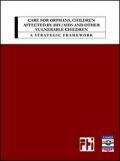
Care for Orphans, Children Affected by HIV/AIDS and Other Vulnerable Children: A Strategic Framework
Resource | Publications,
The global HIV/AIDS pandemic has been changing human lives and the shape of societies for more than 15 years in the heavily infected countries of Sub-Saharan Africa, Asia, Latin America and the Caribbean. It has reversed decades of development gains in health, and slowed economic and social improvement across the board and in ways that will change relationships at family, community and national levels forever.
This document provides a strategic framework to assist national and local planners, implementers, and donors in setting priorities, and outlines the steps necessary to develop responsive care and support programs for orphans, children affected by AIDS and other vulnerable children.





